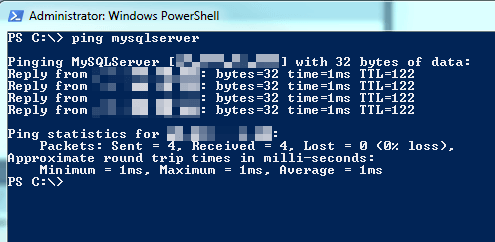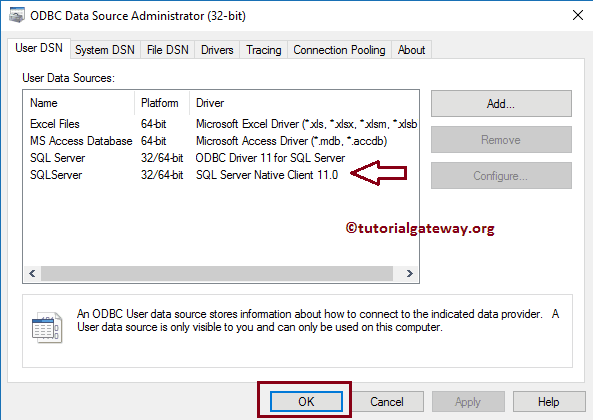
- #CHECK SQL SERVER CLIENT CONNECTION IN DATABASE PASSWORD#
- #CHECK SQL SERVER CLIENT CONNECTION IN DATABASE WINDOWS#
S.nt_user_name, s.original_login_name, c. S.client_interface_name, s.login_name, s.nt_domain, SELECTĬ.session_id, c.net_transport, c.encrypt_option,Ĭ.auth_scheme, s.host_name, s.program_name, Typical query to gather information about a queries own connection. On all other SQL Database service objectives, either the VIEW DATABASE STATE permission on the database, or membership in the #MS_ServerStateReader# server role is required. On SQL Database Basic, S0, and S1 service objectives, and for databases in elastic pools, the server admin account, the Azure Active Directory admin account, or membership in the #MS_ServerStateReader# server role is required. On SQL Server and SQL Managed Instance, requires VIEW SERVER STATE permission. The identifier for the node that this distribution is on. Is nullable.Īpplies to: Azure Synapse Analytics, Analytics Platform System (PDW) The most_recent_sql_handle column is always in sync with the most_recent_session_id column. The SQL handle of the last request executed on this connection. Identifies the primary connection that the MARS session is using. Represents the server TCP port that this connection targeted if it were a connection using the TCP transport. Available only for connections using the TCP transport provider. Upon database modeling with Visual Paradigm, you always need to connect to the database server to perform generation of your database and reverse engineering of your ER model. Represents the IP address on the server that this connection targeted. In Azure SQL Database, this column always returns NULL. Port number on the client computer that is associated with this connection. Prior to V12 in Azure SQL Database, this column always returns NULL. Host address of the client connecting to this server. Network packet size used for information and data transfer. Timestamp when last write occurred over this connection. Timestamp when last read occurred over this connection. Number of byte writes that have occurred over this connection. Number of byte reads that have occurred over this connection. Identifies the memory node to which this connection has affinity. Specifies SQL Server/Windows Authentication scheme used with this connection. Is nullable.īoolean value to describe whether encryption is enabled for this connection. This endpoint_id can be used to query the sys.endpoints view. Is nullable.Īn identifier that describes what type of connection it is. Version of the data access protocol associated with this connection. It currently distinguishes between TDS ("TSQL"), "SOAP", and "Database Mirroring". Specifies the protocol type of the payload. Note: Describes the physical transport protocol that is used by this connection. Is not nullable.Īlways returns Session when a connection has multiple active result sets (MARS) enabled. Timestamp when connection was established. (SOAP connections can be reused by another session.) Is nullable. Represents the session ID for the most recent request associated with this connection. Identifies the session associated with this connection. For serverless SQL pool use sys.dm_exec_connections. Learn more about SQL Server support in Dataedo.To call this from dedicated SQL pool in Azure Synapse Analytics or Analytics Platform System (PDW), see sys.dm_pdw_exec_connections (Transact-SQL). Your database schema has been imported to new documentation in the repository. When done close import window with Finish button. Next screen with allow you to change default name of the documentation under with your schema will be visible in Dataedo repository. You can also use advanced filter to narrow down list of objects.Ĭonfirm list of objects to import by clicking Next. When connection was successful Dataedo will read objects and show a list of objects found.
#CHECK SQL SERVER CLIENT CONNECTION IN DATABASE PASSWORD#
Password are saved in the repository database. You can save password for later connections by checking Save password option.

SQL Server Authentication where you will have to provide username and password.


#CHECK SQL SERVER CLIENT CONNECTION IN DATABASE WINDOWS#
Windows Authentication where your Windows credentials will be used or You can log in to SQL Server using two methods:

Here is a comparison with connection details in SQL Server Management Studio.


 0 kommentar(er)
0 kommentar(er)
